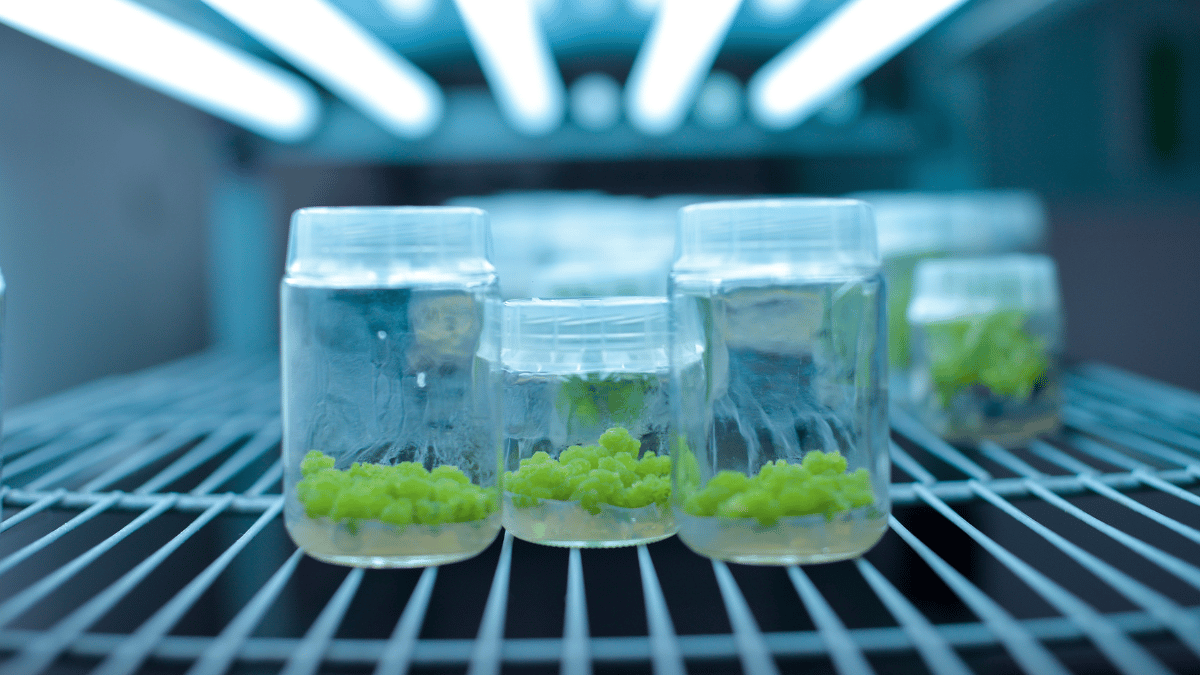
How to Use the Biocoupler™ - Temporary Immersion Bioreactor?
As a content and community manager, I leverage my expertise in plant biotechnology, passion for tissue culture, and writing skills to create compelling articles, simplifying intricate scientific concepts, and address your inquiries. As a dedicated science communicator, I strive to spark curiosity and foster a love for science in my audience.


Introduction to Temporary Immersion Bioreactor
A temporary immersion bioreactor (TIB) system is an advanced approach to the regeneration of plants. In this technique, plant tissues are temporarily soaked in nutrient-rich liquid media, and the excess is then drained away to provide air for proper plant growth.
It is one of the most preferred techniques to scale up the cultured plants or gain more control over the micro-environment. Furthermore, it offers several other advantages including:
- It protects the cultured plants from physiological disorders like vitrification.
- Besides monitoring plant growth, the microenvironment can be controlled better with this system.
- A thin layer of culture media over plants provides proper nutrients for growth and development.
- The air vents attached to the system help protect plants from contaminants.
- It helps to reduce the mechanical stress caused to cultured plants due to agitation.
But, even after these amazing benefits, currently available temporary immersion bioreactors have several limitations, including.
- Design complexity
- Occupy greater space
- Difficulty and confusion in autoclaving TIB parts
Even designing a DIY temporary immersion bioreactor is also a messy process. Because all standard parts need to be assembled properly for the TIB to function. It might save some of your expenses from buying a readymade TIB, but it’s laborious.
Then, you might ask what’s the most efficient approach available?
All these limitations can be overcome by using the Biocoupler™temporary immersion bioreactor.
If you are looking to procure this efficient, yet simplest temporary immersion bioreactor, visit the PCT store. For a limited period, you can get one free Biocoupler™at the purchase of three Biocouplers™.
What is the Biocoupler™ Temporary Immersion Bioreactor?
The patent-pending Biocoupler™ is the most simplified form of temporary immersion bioreactor. It couples/connects two mason jars (or any glass jars) with an integrated filter to facilitate a smooth medium flow. Its unique adjustable vane allows control over liquid flow, helps in preventing the passage of small propagules, and reduces air-lock.
It also contains a microporous vent filter that allows pressure equalization to atmospheric pressure, helping prevent contamination.
The best features of the Biocoupler™ are:
- It's a simplified TIB system.
- It's more efficient space-wise and time-wise, compared to currently available TIB systems.
- It efficiently covers the whole plant, providing better contact with the media nutrients.
- It doesn’t require a gelling agent, only MS media and PPM use will benefit the plant growth, protecting plants from contamination.
- It’s a major tool to multiply in vitro plants.
- It’s not just for hobbyists but also for the large-scale tissue culture of plants.
If you are looking to procure this efficient, yet simplest temporary immersion bioreactor, visit the PCT store.
How to Use Biocoupler™ for Your Tissue Culture Operations?
Follow the steps explained below to get started with your tissue culture processes using Biocoupler™:
- Prepare the culture media without adding gelling agents, such as agar or gellan gum.
- Dispense media into one lower chamber/jar of the TIB system.
- Connect the Biocoupler™ and two mason jars—one containing media and the other empty one. (The Biocoupler™ should be loosely fastened for autoclaving).
- Cover the Biocoupler™ with aluminum foil for sterilization.
- Autoclave Biocoupler™ using a pressure cooker at 121 degrees Celsius for 20 minutes.
- After the Biocoupler™ is cooled down, you can start moving your already tissue cultured plants.
- It’s recommended to keep the Biocoupler™ side with the screw face upside. It makes it easier to adjust the vent size as desired for further tissue culture operations.

Figure: The Biocoupler™ image showing the side that should face upwards.
- Use sterilized forceps to move plants into the Biocoupler™.
- Open the upper chamber of the Biocoupler™ and place the explants on it.

Figure: The image showing how to place the explant on the Biocoupler™.
- After placing the explant, close/connect the upper glass jar with the Biocoupler™.

Figure: A complete Biocoupler™ temporary immersion Bioreactor with plants.
- Wrap the joint, where Biocoupler™ is connected with both the jars using a parafilm or syringe wrap.
- Label the plants.
- Tilt the bioreactors as needed, once a day or once a week, based on the plant and its growth speed.
- Tilting the bioreactor is slowly turning them completely upside down at 180 degrees.
Watch the below-attached video to learn further on the use of Biocoupler™.
The Biocoupler™ have been successfully used with many plants, including:
- Orchids
- Succulents
- Cannabis
- Ferns
- Venus flytraps
Biocoupler™is an easy-to-use system, that can be easily cleaned and reused. Whether you are doing research, education, or commercial production, you now have access to “temporary immersion bioreactor plant tissue culture” in the most efficient, economical, and easiest manner!
If you are looking to procure this efficient, yet simplest temporary immersion bioreactor, visit the PCT store. For a limited period, you can get one free Biocoupler™ at the purchase of three Biocouplers™.
Happy Culturing!

Source: Giphy
Blog Categories
View by Level
Popular Blogs

Callus Culture: Definition and Applications
Introduction Tissue culture is not just one technique! Yes, you heard right! As you know, tissue culture is an advanced...
Read More
6 Plant Tissue Culture Books to Keep Learning
Introduction Most of us are fans of books when it comes to learning a topic in detail and in a...
Read MoreSubscribe to Our Newsletter







Join the conversation
Your email address will not be published. Required fields are marked